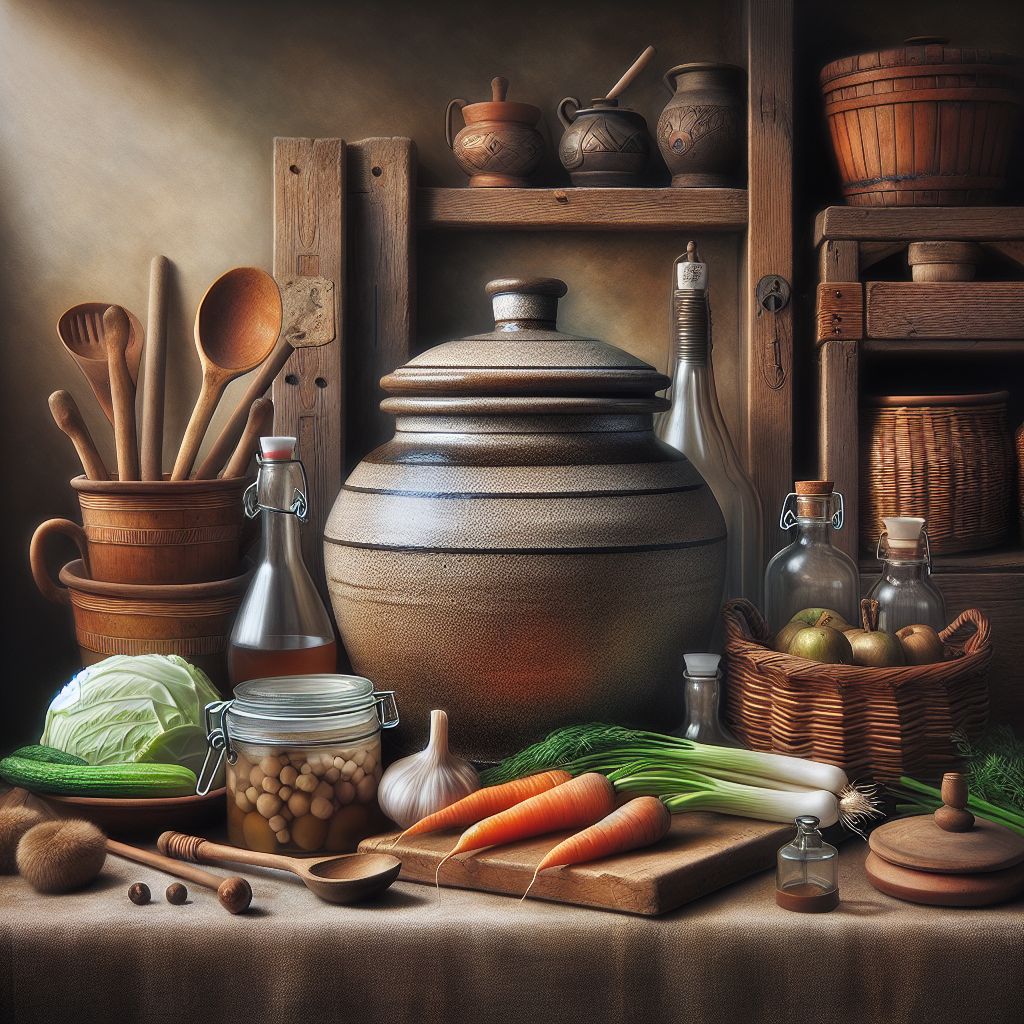
When we talk about self-sufficiency, it’s not just a lifestyle choice; it’s a commitment to taking charge of your own well-being and nourishment. And what could be more empowering than cultivating your own survival garden and learning the age-old practice of fermentation? In this guide, I’ll walk you through the essentials of creating a resilient garden and harnessing the power of fermentation to enrich your diet with gut-healthy probiotics.
Key Takeaways
Starting a survival garden is a practical step towards self-sufficiency and provides food security.
Fermented foods offer probiotics that enhance gut health and overall well-being.
Choosing the right seeds and plants is crucial for a sustainable and productive garden.
Simple fermentation techniques can turn your harvest into nutrient-rich, probiotic foods.
With the right knowledge, anyone can establish a survival garden and create fermented foods at home.
Ecosystems at Your Fingertips: What a Survival Garden Needs
Imagine stepping into your backyard and being greeted by a lush spread of vegetables, fruits, and herbs. That’s what a survival garden can offer – an ecosystem you can rely on. But where do you start? First, you need to consider the space you have available. Whether it’s a sprawling backyard or a modest balcony, your survival garden should fit your space and your needs. Most importantly, it should include a variety of plants that will provide you with a steady supply of food throughout the year.
From Seed to Table: The Basics of Growing Your Own Food
There’s something deeply satisfying about watching a seed you planted sprout and grow into food for your table. To get started, you’ll need quality seeds—preferably non-GMO and heirloom varieties, as they’ll produce plants that are more resilient and better adapted to local conditions. You’ll also need basic gardening tools, fertile soil, and a reliable source of water. Because your survival garden is about self-reliance, learning to compost to enrich your soil is a key step. Remember, it’s not just about growing food; it’s about nurturing life from the ground up.
Now, let’s talk about the nutritional powerhouse that is fermentation. It’s a natural process that not only preserves your harvest but also enhances the nutritional value of your food. Fermentation introduces beneficial bacteria—probiotics—into your diet, which are essential for a healthy gut.
Fermentation 101: Turning Your Harvest into Probiotic Powerhouses
Turning your harvest into a probiotic powerhouse is simpler than you might think. The basic principle of fermentation is allowing natural bacteria to break down the sugars and starches in food to create lactic acid. This process not only preserves the food but also creates beneficial enzymes, B-vitamins, Omega-3 fatty acids, and various strains of probiotics. All you need to start is some fresh produce, salt, water, and a clean jar. From there, you can experiment with different recipes to find your favorite flavors.
Live Cultures and Your Health: Why Fermentation Matters
Why should you care about live cultures in your food? Because they’re the secret to a healthy gut. A balanced microbiome is linked to numerous health benefits, including improved digestion, enhanced immune function, and even better mental health. By incorporating fermented foods into your diet, you’re taking a proactive step towards a healthier you. And the best part? You can produce these probiotic-rich foods right in your own kitchen with the fruits and vegetables from your survival garden.
With these insights, you’re well on your way to cultivating a thriving survival garden and enriching your diet with nutritious fermented foods. But this is just the beginning. In the following sections, we’ll dive deeper into how you can set up your garden, select the right seeds, and master the art of fermentation to sustain your health and well-being for the long term.
Preserving the Harvest: Traditional Fermentation Methods
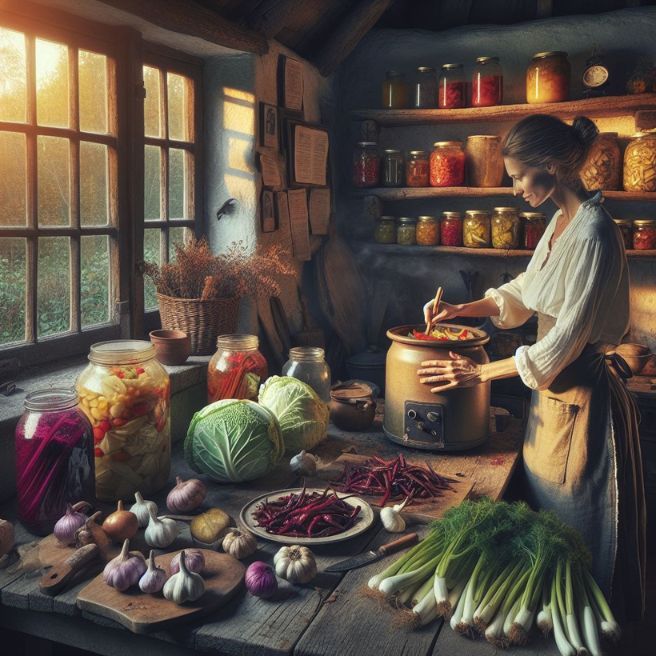
When you’ve put in the effort to grow and harvest your own food, it’s only natural to want to enjoy it for as long as possible. Traditional fermentation is not just about preservation, though; it’s about transformation. It turns simple ingredients into probiotic-rich superfoods. It’s a practice that has been honed over centuries, and now, it’s time to bring that wisdom into your own kitchen.
The Art of Sauerkraut: A Time-Honored Tradition
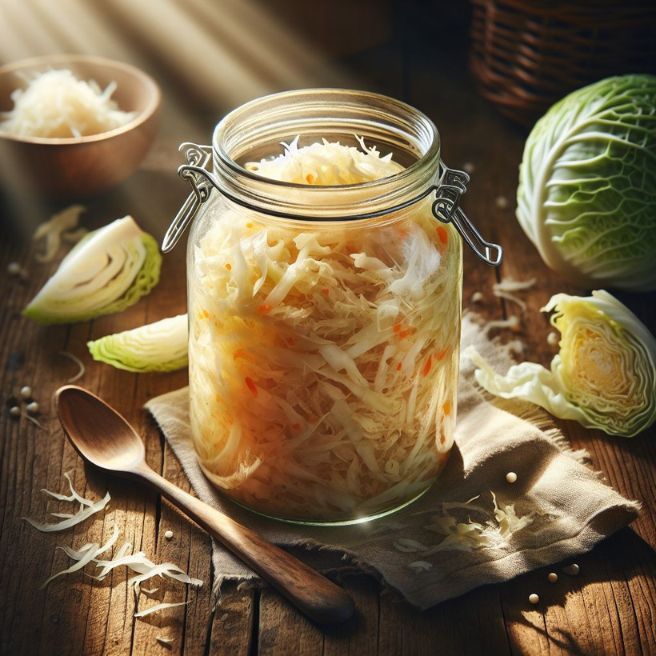
Sauerkraut is one of the simplest and most efficient ways to preserve cabbage, and it’s packed with flavor and nutrients. To make it, all you need is finely sliced cabbage, salt, and time. By massaging the salt into the cabbage, you draw out the water, creating the perfect environment for lactobacillus bacteria to thrive. These bacteria are the heroes of fermentation, turning the cabbage’s sugars into lactic acid—a natural preservative that inhibits the growth of harmful bacteria.
The key to successful sauerkraut is patience. After combining the cabbage and salt, pack it tightly into a jar and let nature take its course. Over the course of a few weeks, the cabbage will ferment and transform into sauerkraut. The tangy flavor and crunch make it not only a delicious side dish but also a healthful addition to any meal, thanks to the abundance of probiotics created during the fermentation process.
Quick Pickles and Kimchi: Fermentation for Beginners
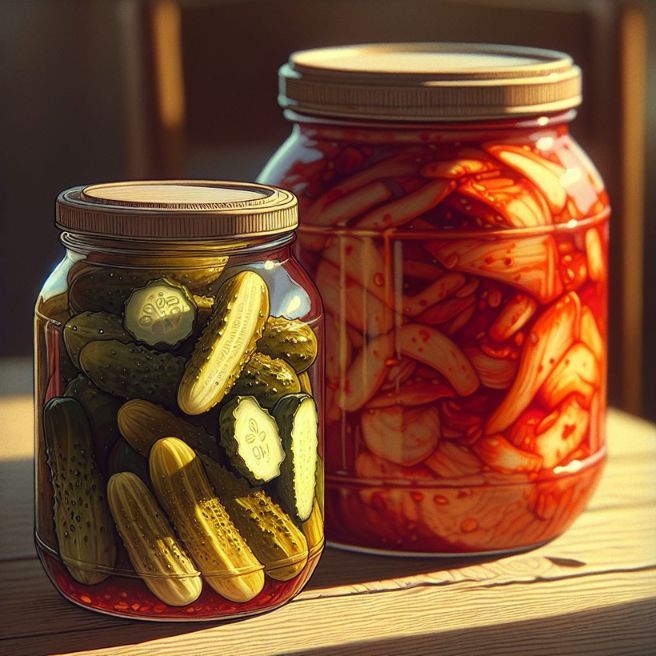
Quick pickles are a fantastic entry point for those new to fermentation. Unlike traditional pickling, which often uses vinegar and canning methods, quick pickles rely on a simple brine solution. Slice up some cucumbers, add them to a mixture of water, salt, and your favorite spices, and let them sit at room temperature for a few days. The result? Crunchy, tangy pickles that are perfect for snacking.
Kimchi, a staple in Korean cuisine, is another beginner-friendly ferment. This spicy, garlicky ferment is typically made with napa cabbage and Korean radish, mixed with a flavorful paste of chili powder, garlic, ginger, and fish sauce. As kimchi ferments, it develops its signature pungent taste and becomes rich in probiotics. It’s a testament to how fermentation can elevate simple vegetables to a whole new level of flavor and nutrition.
Kefir and Yogurt: Dairy Fermentation Demystified
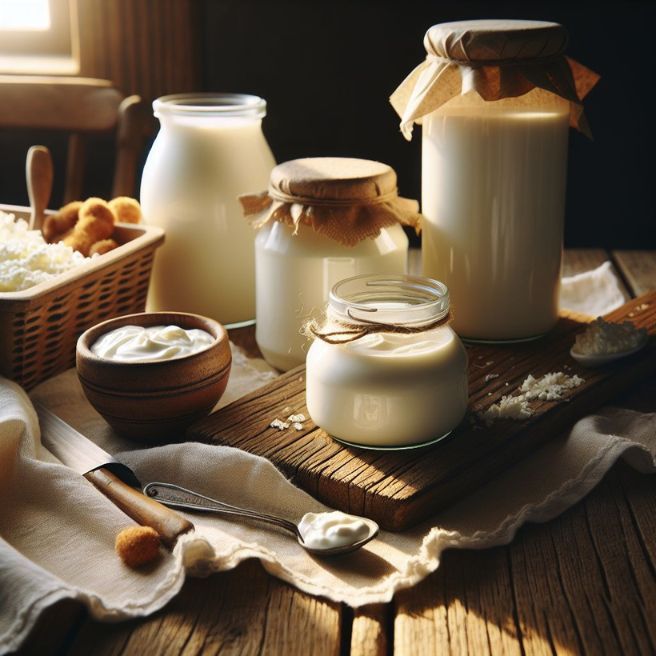
Moving beyond vegetables, dairy fermentation is another avenue to explore. Kefir and yogurt are two of the most popular fermented dairy products, and they’re surprisingly easy to make at home. For kefir, you’ll need kefir grains, which are a symbiotic culture of bacteria and yeast. When added to milk, these grains ferment the lactose, producing a tangy, slightly effervescent drink that’s brimming with probiotics.
Yogurt requires a starter culture, which can be from a previous batch of homemade yogurt or a store-bought plain yogurt with live cultures. By heating milk and then inoculating it with the starter culture, you create the perfect environment for beneficial bacteria to grow. As the milk cools, it thickens into yogurt. Both kefir and yogurt offer a creamy texture and a host of health benefits, making them ideal for a gut-friendly diet.
Garden to Gut: Combining Survival Gardening with Probiotic-Rich Foods
Your survival garden is more than just a source of fresh produce; it’s the starting point for a gut-healthy diet. By combining the fruits of your labor with traditional fermentation techniques, you’re creating a symbiotic relationship between garden and gut. This not only maximizes the yield from your garden but also ensures that you’re consuming a variety of beneficial bacteria that support your digestive health.
And here’s the beautiful part: as your garden grows and changes with the seasons, so too can your fermented creations. From tangy spring radishes to robust autumn cabbages, each season brings new opportunities to experiment with fermentation. This cyclical process mirrors the natural rhythms of the earth, reinforcing the connection between the food you grow and the food you eat.
Veggie Variety: Best Options for Fermentation
Not all vegetables are created equal when it comes to fermentation. Some of the best candidates from your garden include:
Cabbage for sauerkraut and kimchi
Cucumbers for pickles
Carrots for a crunchy, tangy snack
Beets for a sweet and sour twist
Peppers for a spicy kick
These vegetables not only ferment well but also bring a range of flavors and textures to your table. They’re rich in nutrients, and when fermented, they become even more beneficial for your health.
A Balanced Microbiome: The Health Benefits Uncovered
A well-balanced gut microbiome is essential for good health. Fermented foods introduce a diversity of beneficial bacteria into your digestive system, which can help balance your gut flora. This balance has been linked to numerous health benefits, including improved digestion, a stronger immune system, and even a positive impact on mental health.
Consider this: a spoonful of homemade sauerkraut can contain trillions of probiotics, which is more than you’ll find in many over-the-counter supplements. By incorporating a variety of fermented foods into your diet, you’re not just enjoying delicious flavors; you’re actively contributing to your body’s well-being.
Cultivating Resilience: Long-Term Strategies for Survival Gardening
A survival garden is more than a one-season wonder; it’s a long-term commitment to resilience and sustainability. To ensure your garden continues to provide for you year after year, you need to think ahead and plan for the future. This means understanding the needs of your plants, the cycles of your climate, and the capacity of your soil.
Most importantly, it involves embracing a mindset of continuous learning and adaptation. As you become more attuned to the rhythms of your garden, you’ll find ways to optimize your space and resources, ensuring a bountiful harvest with each passing season.
And as you harvest, remember that each vegetable or fruit you grow is not just food—it’s a potential source of probiotics waiting to be unlocked through fermentation.
Seasonal Planting: Adapting Your Garden Year-Round
Seasonal planting is a cornerstone of survival gardening. By rotating your crops and choosing plants that are suited to your local climate, you can maximize your garden’s productivity. In the spring, focus on leafy greens and peas; in the summer, tomatoes and cucumbers; in the fall, root vegetables and squashes. Each season brings its own set of challenges and rewards, and by planning accordingly, you can ensure a constant supply of fresh produce.
Crop Rotation and Soil Health: The Secrets of Perpetual Yield
Crop rotation is not just an age-old farming practice; it’s a vital strategy for maintaining soil health and preventing disease. By rotating where you plant certain crops each year, you can help balance the nutrients in your soil and avoid depleting it. For example, legumes like peas and beans fix nitrogen in the soil, which can benefit leafy greens planted in the same spot the following year.
Additionally, crop rotation can help break the cycle of pests and diseases that can become established if the same crops are grown in the same place year after year. A diverse garden is a healthy garden, and by rotating your crops, you’re creating a dynamic environment that can support a wide range of plant life.
The Symbiosis of Soil and Gut Health
The health of your garden’s soil and your own gut may seem worlds apart, but they’re more connected than you might think. Both are ecosystems teeming with microorganisms that play a crucial role in the health of their respective environments. Just as a diverse soil microbiome can support healthy plant growth, a diverse gut microbiome can support your overall health.
By focusing on both soil health in your garden and gut health through fermentation, you’re creating a cycle of wellness that feeds back into itself. Your garden nourishes you, and in turn, you nourish your garden—both physically and metaphorically.
Remember, the journey to self-sufficiency is a personal one, and there’s no one-size-fits-all approach. But with these guidelines, you’re well-equipped to start cultivating your own survival garden and enjoying the rich flavors and health benefits of fermented foods. Whether you’re a seasoned gardener or a fermentation novice, there’s always something new to learn and explore in the world of self-sufficiency.
When we talk about self-sufficiency, it’s not just a lifestyle choice; it’s a commitment to taking charge of your own well-being and nourishment. And what could be more empowering than cultivating your own survival garden and learning the age-old practice of fermentation? In this guide, I’ll walk you through the essentials of creating a resilient garden and harnessing the power of fermentation to enrich your diet with gut-healthy probiotics.







Leave a Reply